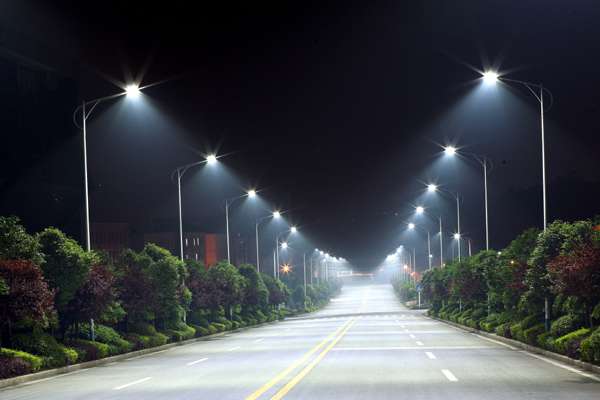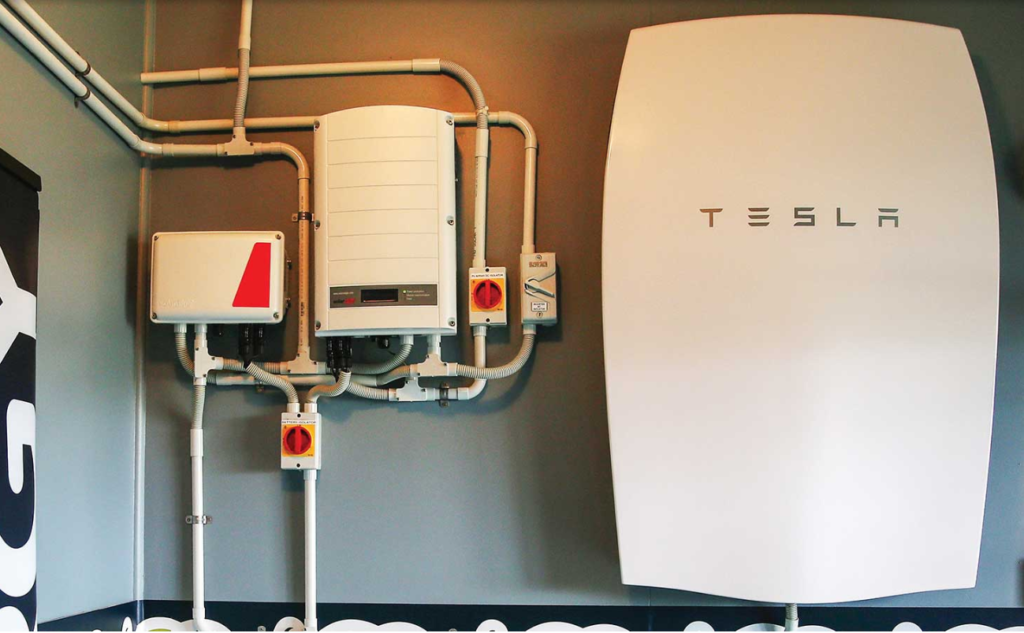This is the tenth in an ongoing series illustrating the relationship of Drawdown strategies to landscape architecture. For context, read the initial post here.
Compared to buildings, the relative energy demands for landscape architecture projects are a fraction of the energy usage, and this often means we forget to fully address opportunities for both reduction of energy demand and exploration of energy generating potential. Overall, lighting uses up to 15% of global electricity, per Drawdown. The biggest opportunity in site is already well underway, a shift to LED Lighting, which has transformed energy efficiency in terms of both Households and Commercial applications (Drawdown solutions #33 and #44 respectively, with a combined 12.85 gigatons of reduced CO2 over the next 30 years). Household LEDs have a slightly higher potential, with the biggest barrier being the significantly higher (2-3x) cost over incandescent and fluorescent bulbs. The overlap with landscape architecture is more related to public uses, and due to their lower energy usage, also have the opportunity to be supplied by on-site sources like solar, which is especially useful in remote areas where infrastructure costs would be high.

Beyond lighting interiors, the use of LEDs for infrastructure (like streets, public spaces) as well for site designs (parks, trails, open spaces, and public and private properties) have tons of applications in the landscape. Even a few years back, there were only a couple of options and they tended to have pretty terrible light quality, both in intensity control and color/warmth. New generations are much more ‘designer-friendly’ in terms of aesthetics. There are also concerns related to impacts on wildlife, and lots of studies are underway to show how to help illuminate for safety and security (which includes a whole set of other issues like how much light, dark skies), while protecting the diurnal cycles and environments for a variety of fauna.

Beyond efficiency, there are expanding opportunities for including small-scale Micro Wind for electricity generation. The idea of vertical axis wind turbines are starting to show up on buildings . This also potentially takes advantage of urban wind tunnels and other microclimatic effects to boost generation. These are not substitute for other larger renewable energy options, but can be strategically used to generate on-site power without the cost of larger energy grids – which makes them really perfect for landscapes. Per Drawdown:
“Experts estimate that a million or more micro wind turbines are currently in use around the world. The key factor for growing that number is cost. Currently, the price per kilowatt of small-scale wind is much higher than that of utility-scale turbines, and payback periods can be long, in part because they are installed individually. “
Similar ideas could include augment site based Rooftop Solar, and more distributed small, flexible which is being integrated directly into lighting and bollards, irrigation controllers, water pumping, battery charging and other low-energy use site features that could be self-sufficient. Looking beyond generation, the ideas of Microgrids. As mentioned: “A microgrid is a localized grouping of distributed energy sources, like solar, wind, in-stream hydro, and biomass, together with energy storage or backup generation and load management tools. This system can operate as a stand-alone entity or its users can plug into the larger grid as needed. Microgrids are nimble, efficient microcosms of the big grid, designed for smaller, diverse energy sources. The use of local supply to serve local demand makes them more resilient and reduces energy lost in transmission and distribution.”

This can be coupled with new technologies around distributed Energy Storage that allow for modular, site specific options that don’t require connections to larger grids. Due to renewable energy output fluctuations, storage can help ease outages, batteries can store that energy, making the transition to solar and wind more possible, resulting in less emissions. Small scale batteris like the Tesla Powerwall and others are dropping in price, and have lots of opportunities to help power landscape equipment like pumps, irrigation controllers, and efficient LED site lighting.

There are also options for utilities to increase storage to gain resilience during off-hours, which is an issue especially with renewables like solar and wind. Ideas like pumped-storage, which involves pumping water uphill during times with power, then letting that water run downhill to run turbines during times with less output. Other alternatives use molten salt to hold heat underground, and large scale battery arrays, which may not make sense for site, but the technologies will inform smaller district-scale opportunities.
The last segment of this has to do with site, district and regional scale solutions, as there are interesting opportunities in . Also, the focus is building-specific on additional strategies for Retrofitting and Building Automation, both of these align with sites. The ability to go back to previous sites and look at energy and water retrofits is key, and there was actually quite a bit of sustainability retrofitting happenings during the last recession, where owners were looking for savings. Automation can aid in efficiency of systems, such as smart controllers tied to sensors in the landscape, which have the ability to help monitor and provide real-time feedback for landscapes. This can be related to water and energy efficiency, and it also has larger opportunities in measuring landscape performance.
The water-energy nexus is also salient to landscape, as we often thing in terms of efficiency in resource use, which very important, but less-so in terms of energy to supply and treat water. Green infrastructure then is not just about the ecological benefits and the water quantity and quality, but also overlaps with energy, which amplifies the relevance to climate change. In short, it emphasizes the fact that these systems (ecology, energy, water) are all dynamic and interlinked.
HEADER: Rooftop Terrace Lighting at the LEED Platinum First & Main Office Building in Portland, OR – project by Greenworks
